Nanhai Chan Temple
Nanhai Chan Temple
Nanhai Chan Temple, a national AAAA scenic spot, is located in the southeast corner of Runan County, Zhumadian City, Henan Province, China. It covers an area of more than 500 mu, and has a vast Temple territory and numerous buildings. The main building is the Daxiong Palace, which has a base of 2 meters and a square surface with a side length of 80 meters. The building area has reached 6400 square meters.
Shanmen Archway of Nanhai Zen Temple is 50 meters long and 31 meters high. On Yongdao Road, which is 500 meters long and 20 meters wide, 12 granite archways have been built from north to south according to 12 causes, 12 zodiac signs and 12 bodhisattvas. The style is unique and magnificent.
The northeastern part of Nanhai Zen Temple is the Baigong Shangren Shrita Courtyard. The pavilions and tablets are scattered and well laid out. The Shrine Tower built for Lord Bai Gong is carved from granite, which combines the ancient Chinese architectural art with the modern style of building the tower in Southeast Asia. Starting from September 20, 2018, the ticket price of Nanhai Chan Temple scenic spot (4A level scenic spot) in Runan County, Zhumadian has been reduced from 50 yuan per person to 40 yuan per person.
Construction History
According to historical records, the small South China Sea, formerly known as the South Lake, was the land where dykes were built and dikes were excavated in successive dynasties, but the lake could not be built in the later part of the lake. After nearly 600 years of construction and decoration in the Ming and Qing Dynasties, a scenic area with a total area of 1000 mu has been formed, from the east of Wuyingta to the north of Rushui River to the trench. The Guanyin Pavilion built in Nanhu in Ming Dynasty is a model imitating Putuo Temple in South China Sea. Because Guanyin Pavilion is smaller than the South China Sea, people call the South Lake Xiaonanhai. The ancient buildings in Xiaonanhai include Guanyin Pavilion, Dashi Temple, Quan Ti Tower and Huanghe Tower.
According to the Records of Runan County, Guanyin Pavilion was built in Jiajing in the Ming Dynasty in 24 years. The Yellow Crane Tower, built in the thirty-second year of Wanli in the Ming Dynasty (1606 A.D.), was destroyed at the end of the Ming Dynasty. During Yongzheng reign of the Qing Dynasty, Tianzhong Academy was located on Nanhu Lake, which was called Nanhu Academy. During the reign of Qianlong, the inscription "Deng Ying" by Daxing Dou Yu was inscribed on a bluestone and stood on the side of South Hubei.
According to the Records of Runan County, in 1928, Feng Yuxiang, the governor of Henan Province, ordered the beating of god-picking temples. All the temple gods in Xiaonanhai were destroyed and gradually recovered in 1937. Unfortunately, it was destroyed again during the Cultural Revolution and was replanted by the Runan Garden School.
In 1994 (another statement is 1992 ), the Ming multiplier, presided over by Guanyin Chan Temple in Daxiangshan, Taipei, invested 150 million yuan to rebuild the temple in his hometown. Taipei Baisheng Master's Shrine Tower is also built in this temple. On September 24, 1994, more than 800 great mages, monks and people from all walks of life from Taiwan, Thailand, Indonesia, Singapore, Hong Kong and other countries and regions attended the inauguration ceremony of Master Bai Sheng's Shrita.
Temple Layout
Nanhai Chan Temple is built on the beach of Ruhe River. The overall layout of the temple is a "scholar" type. The surrounding wall is 3 meters high and 5,300 meters long. It is a brick-concrete structure. In front of the temple gate are three palaces, and on both sides of the temple are worshipped two vajrayans as the second general of "hum-ha". In the south of the temple are the palace building areas with the center of the Daxiong Palace.
The building area of Daxiong Palace is 5274.30 square meters, 36 meters high. It is a three-storey double eaves palace. There is a 17-meter-high, 72-ton bronze statue sitting in the interior and a 1200-square-meter square in front of the palace. In front of Daxiong Palace is Tianwang Palace, with a building area of 333.16 square meters and a height of 15 meters. There are four statues of diamonds and eight statues of strange colored mud in the palace.
The latter is the Guanyin Hall, with a building area of 2170.8 square meters. The hall is dedicated to only one statue 14 meters high, carved by camphor wood with thousands of hands and thousands of eyes, with two-sided Guanyin gold sitting statues. The two halls are 1520 square meters high and 21 meters high. In the hall, there is a statue of Jin Manju and Puxian bronze statue with a height of 9 meters and a weight of 12 tons.
On the left and right sides of Daxiong Palace are bell tower and drum tower, with a building area of 626 square meters and a height of 36 meters. It is a two-storey double eaves Pavilion building. The northern part of the monastery consists of twelve archways and mountain gates. Twelve archways are 7.6 metres high and 8 metres wide. They are situated on a 500 metre long swing road. Shanmen is located in the north of Twelve Memorial Squares. It is the north gate of Nanhai Zen Temple. It is 32 meters high and 50 meters wide. It is an archway building.
Century Peace Bell Tower is located in the northeast side of the monastery, with a building area of 772.84 square meters and a height of 34.6 meters. It is a three-storey wing-corner Pavilion building with a 7-meter high, 6-meter diameter and 21-ton Century Peace Bell. The north side of the Bell Tower is the White Saint-Shrine Garden. The upper living room is a rectangular enclosure group. There are more than 20 buildings on three floors. There are free-living ponds, goldfish in the pond, rockery hills and a nine-curve stone bridge.
White Saint Shrine Garden covers an area of more than 10 mu. There is a white Saint Shrine Tower in the middle of the garden, 15.5 meters high, which is a classical building. There are clear stone paved paths in the park. Flowers, plants and trees are planted on both sides of the paths. In the west of the monastery, Kaishan Hall is a two-storey pavilion building with a "Buddha" garden consisting of kimbers and cypress.
Xishanmen Architecture
It takes two times to cross the Ruhe River, three bridges and three gates to enter the Daxiong Palace of Nanhai Zen Temple from Xishan Gate. They are:
World Peace Gate, Jinxia Bridge;
World Cooperation Gate, Cross-Strait Cooperation Bridge;
The world and the closure of the door, three-center bridge.
This group of buildings, with one door and one bridge as a unit, constitutes three groups of architectural landscape with unique style and symbolic significance.
Ticket Price
Starting from September 20, 2018, the ticket price of Nanhai Chan Temple scenic spot (4A level scenic spot) in Runan County, Zhumadian has been reduced from 50 yuan per person to 40 yuan per person.
Traffic information
Zhumadian is an important city on the Beijing-Guangzhou Railway. It lies between Luohe and Xinyang, and to the west is Nanyang.
Zhumadian Railway Station is located near Jiefang Avenue and Renmin Street.
Zhengzhou: Every hour, luxury bus, ticket price is about 48 yuan; every day 5:20-18:30 every 25 minutes departure.
Luoyang: 7:40, 13:50, 14:20, 14:50, 15:30.
Xinyang: 6:00-18:00, every 30 minutes.
Bus from Zhumadian to Runan County by bus, the scenic spot is in the county town.
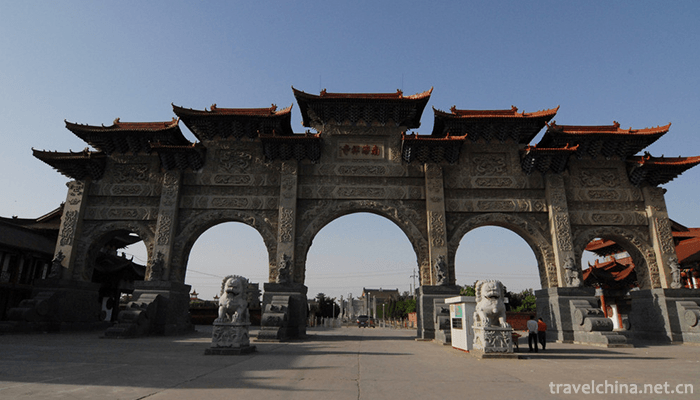
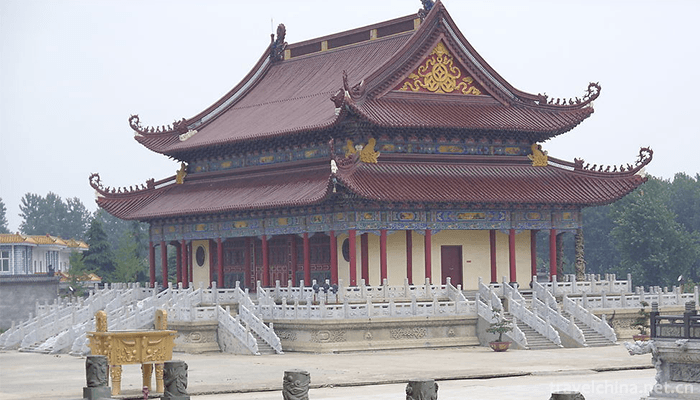
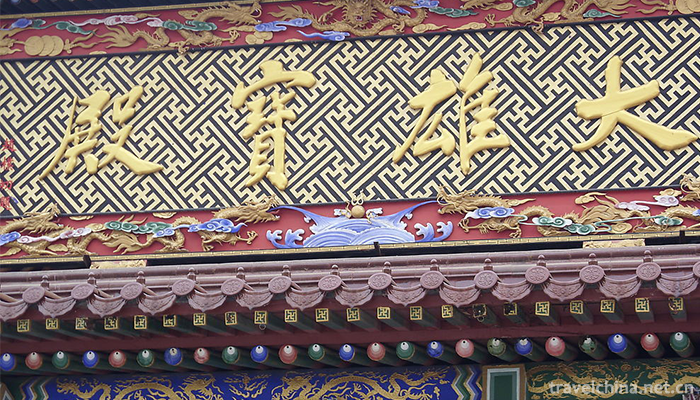
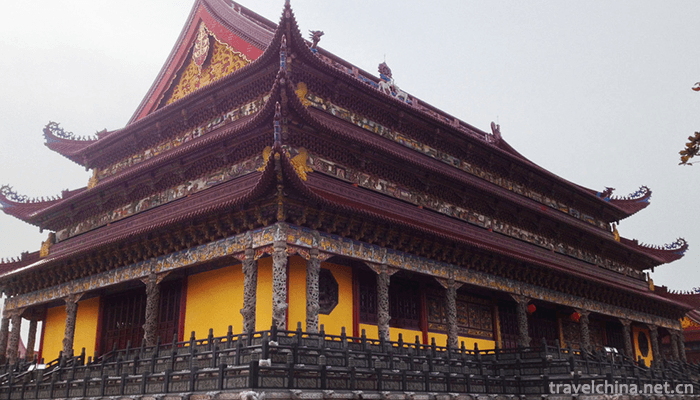
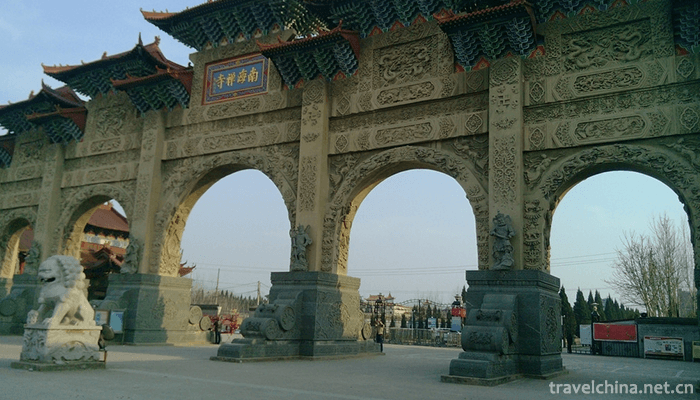
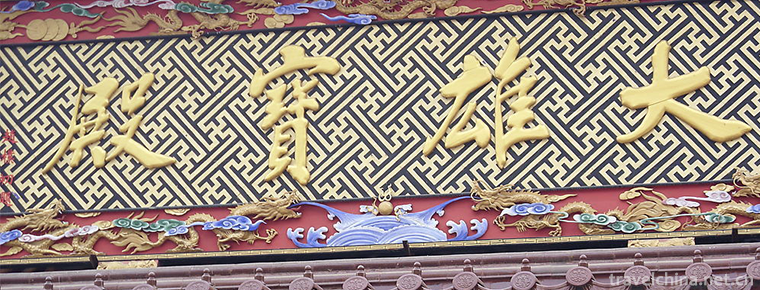
-
1.Sliced Fish in Hot Chili Oil
Boiled fish, also known as river boiled boiled fish and boiled fish fillet, was first popular in Cui Yun Township, Yubei District, Chongqing.
Time 2018-10-27 -
2.Chuanlord Tourism & Leisure EXPO Park
Chuanlord Tourism & Leisure EXPO Park ,Changlu Tourism Xiubo Park, or Changlu Environmental Protection Holiday Farm (hereinafter referred to as "Changlu Farm")
Time 2018-12-12 -
3.Longsha Park
Located in the center of Qiqihar city, Longsha Park has a history of one hundred years. It covers an area of 64 hectares, including 20 hectares of water.
Time 2019-02-06 -
4.Qianling Mountain Park
Qianling Mountain Park is a comprehensive tourist park, built in 1957, located in the northwest corner of Guiyang City. It is named Qianling Mountain because of its "first mountain in southern Gu
Time 2019-02-07 -
5.The Dai Garden of Xishuangbanna
The Dai Garden is called Xishuangbanna Dai Garden. Located in Xishuangbanna Olive Dam, Yunnan Province, China. There are five Dai Natural Villages with the best preservation in China
Time 2019-02-25 -
6.Construction Techniques of Tibetan Diaolou
Gabu Tibetan ancient building complex is located on the second terrace on the north-east Bank of Mako River, 3 kilometers northeast of Lighthouse Township, Banma County
Time 2019-04-05 -
7.Big flat tone
Da Ping Diao (also known as Ping Diao, Da You Bang and Da Bang Opera), one of the local traditional operas in Henan and Shandong Province, is one of the national intangible cultural heritage.
Time 2019-04-23 -
8.Cloisonne Production Techniques
Cloisonne production skills, Chongwen District, Beijing, local traditional skills, one of the national intangible cultural heritage.
Time 2019-05-08 -
9.Legend of the Three Kingdoms
The legend of the Three Kingdoms is a kind of folk literature which was approved by the State Council and listed in the fourth batch of national intangible cultural heritage list in 2014.
Time 2019-06-12 -
10.Talking in North Shaanxi
North Shaanxi storytelling is mainly popular in Yan'an and Yulin in the north of Shaanxi Province. At first, poor and blind people sing some legendary stories in the folk song minor of northern Shaanx
Time 2019-06-13 -
11.Jumping Cao Gai
Caogai jumping is prevalent in Baima Tibetan area of Pingwu and Nanping counties. It is held on the sixth day of the first month of the lunar calendar every year. Cao Gai is a Baima Tibetan phonetic t
Time 2019-06-21 -
12.Paoma mountain Paoma Hill
Paoma mountain is located in the south of Kangding City, Ganzi Tibetan Autonomous Prefecture, Sichuan Province. It is the extension of Gongga mountain to the north. It is the core area of the "two-hour tourism economic circle around Gongga" and a national
Time 2020-12-06